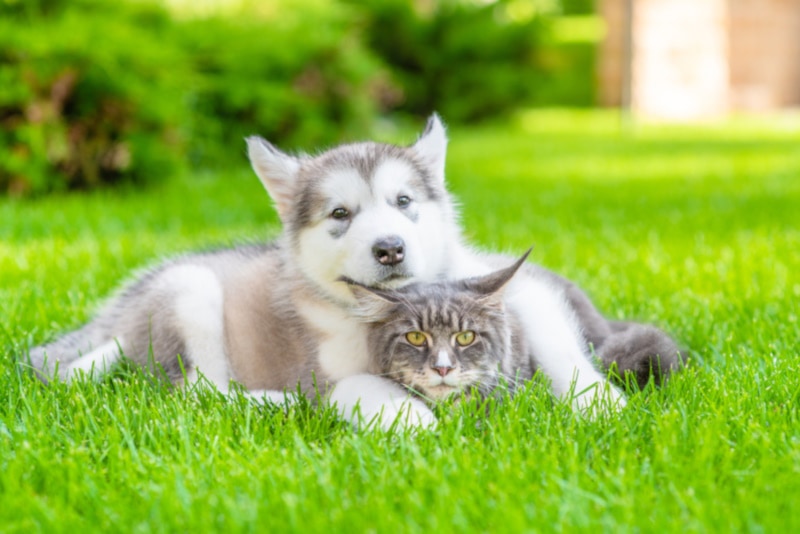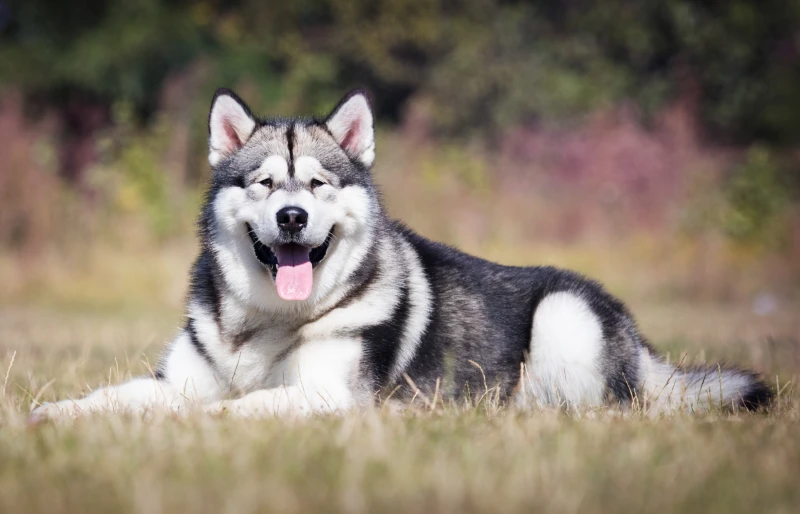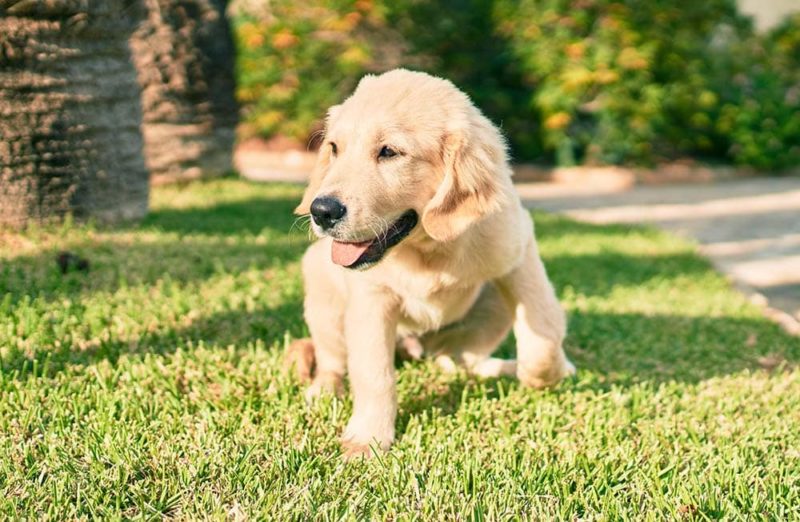Is an Alaskan Malamute Good With Cats? Behavior & Introduction Tips
Updated on

Click to Skip Ahead
As an animal lover, you know that sometimes having one pet just isn’t enough. However, it’s not always ideal to bring another pet into the home—especially if the one you currently have may not get along well with newcomers. If you’re debating introducing an Alaskan Malamute with your resident kitty (or vice versa), you’ve come to the right place.
Can Alaskan Malamutes and cats coexist? Unfortunately, the answer isn’t a simple “yes” or “no.” Malamutes can have very high prey drives, making them naturally inclined to chase and kill smaller animals. But that doesn’t mean these two animals can’t successfully integrate. Alaskan Malamutes can be good with cats, but you’ll have to introduce them carefully and supervise their interactions.
The Alaskan Malamute Prey Drive
You should understand all you can about the Malamute’s prey drive before learning more about their suitability for living with cats.
Alaskan Malamutes are a native Alaskan Arctic dog breed closely related to the Russian Samoyed and the Siberian Husky. They are working dogs, traditionally used to help pull heavy sleds. However, they were also renowned for their superb hunting abilities and were often used to hunt large predators like bears.
This strong hunting background gives modern Malamutes their high prey drive. While your pup probably won’t be hunting bears in their spare time, their prey drive will still be active. They’ll be likely to chase smaller animals, like rabbits or squirrels and, yes, cats. This is why seasoned Malamute owners know to keep their pups on leashes when they’re out for walks unless they’re in a completely closed-in and safe dog park.

Do Alaskan Malamutes Get Along With Cats?
As we mentioned in our introduction, there isn’t a concrete “yes” or “no” answer to this question. Some Alaskan Malamutes can get along with cats, but that doesn’t mean all will. The compatibility of a Malamute and a cat will depend a lot on both animal’s personalities and the situation in which the animals are being introduced.
With early socialization and training, some Alaskan Malamutes can learn to live harmoniously with cats. Most success stories involved the dog being introduced to the kitty when they were still a puppy, and their prey drive hadn’t yet fully developed.
But that’s not to say that your adult Malamute can’t be introduced to a cat later in life and not be able to coexist successfully. It really just comes down to the personality of your individual dog. Some are easier going and more receptive to the training you’ll need to take them through to live alongside a cat, while others can’t get those prey-drive instincts under control long enough to share close quarters with smaller animals.
How to Introduce an Alaskan Malamute to a Cat
Dogs and cats can live harmoniously, provided the circumstances of their cohabitation are ideal. Here are some tips on how to introduce a cat and an Alaskan Malamute.

Teach your dog basic commands.
Your Malamute should be able to comprehend basic commands such as “sit”, “stay”, and “down” before meeting your cat.
Set up safe zones.
Your two animals should have their very own area in your home, which the other animal cannot access. Keep them separated, at least until the newcomer feels comfortable in their space.
Begin scent swapping.
Now that the new pet is comfortable in your home, it’s time to introduce both animals to one another’s scent. Cats and dogs use their strong sense of smell to make sense of their world, so this is a step you do not want to skip.
Scent swapping can be done in several ways. One option is to take a blanket or toy from each pet’s safe space and put it into the other animal’s room. Another involves allowing the two animals to have encounters from behind closed doors. Take your kitty to the room where your Malamute is being kept and let them smell one another with the door as a barrier between them.
Allow them to see each other.
Once the two animals are comfortable with one another’s scent, you can allow them to see each other. You must take things slowly here and keep each encounter very brief. Pay close attention to the body language of your pets to determine if the meetings need to be cut shorter.

Let them interact.
Once your pets can handle the scent and sight of one another, you can allow them to interact. Keep your Malamute on a leash. Do not force these encounters. Your cat should have an escape route they can take if they’re feeling uncomfortable.
Supervise them.
It should go without saying, but your kitty and Malamute should be kept separate whenever you are not around to supervise them. Even the best-behaved dogs can be taken over by their prey drive, and that’s not a sight you want to come home to.
Be patient.
Never rush through this introductory period, and don’t set an unrealistic timeline for this transitionary period. Listen to your pets and let them guide you. Give them plenty of time to adjust to each other’s presence.
Provide a cat-friendly environment.
Your cat needs places in your home to climb, hide, and escape if they feel threatened by your Malamute. Provide plenty of cat-safe spaces that your dog cannot access, such as cat trees, wall shelves, or completely dog-free zones.
Final Thoughts
Alaskan Malamutes and cats may be able to get along, but this isn’t always the case. It depends entirely on the personality of your pets and the circumstances in which they are introduced. You may have better luck living harmoniously with a kitty and a Malamute if they’re introduced at a young age and the transitionary period is slow, controlled, and deliberate.
Featured Image Credit: Ermolaev Alexander_Shutterstock













